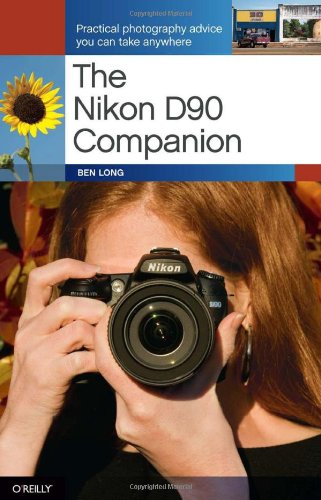All Categories


The Nikon D90 Companion: Practical Photography Advice You Can Take Anywhere
Share Tweet








The Nikon D90 Companion: Practical Photography Features
-
Used Book in Good Condition
About The Nikon D90 Companion: Practical Photography
Product Description Through easy-to-follow lessons, this handy book offers a complete class on digital photography, tailored specifically for people who use the Nikon D90. This is not your typical camera guide: rather than just show you what all the buttons do, it teaches you how to use the D90's features to make great photographs-including professional-looking images of people, landscapes, action shots, close-ups, night shots, HD video, and more. With Ben Long's creative tips and technical advice, you have the perfect, camera-bag-friendly reference that will help you capture stunning pictures anywhere, anytime. The Nikon D90 Companion will show you how to: Take creative control and go beyond automatic settings Learn the basic rules of composition Capture decisive moments, including fast-moving objects Discover ways to use a flash indoors and outdoors Learn about different lenses, and the best time to use them Understand the options for shooting RAW, and whether it's right for you Use the D90's ability to shoot high definition video Amazon.com Review The Nikon D90 camera has exploded on the digital photography market, with a myriad of new features, including the industry-first HD video capability. The Nikon D90 Companion is intended to serve as a full-on photography class, one that covers everything including technical matters and exposure theory, composition theory, and how to find images and expand your visual sense. However, unlike a regular photography class, this book is built specifically around the D90, which means every concept is written about in terms of the D90's controls and features. By the time you're done with this book, you'll not only know how all the D90's controls function, but you'll also know how to recognize a good photo and how to use the D90's controls to represent that subject as a compelling image. In other words, you'll be a better photographer, whether you're shooting simple snapshots or aiming for something more. Shooting Panoramas By Ben Long No matter how wide your lens might go, there will still be times when you face a vista that just can’t be captured in one frame. Now you can take a series of frames with your Nikon D90 images, and, rather than layering them together as a collage, you can digitally merge them into a single seamless image. Shooting this type of panoramic image requires a combination of shooting technique and special software. You must shoot your images in a particular way to ensure that they contain the information you need to construct a good panorama and then use special stitching software to create the seamless merge. (Your Nikon Software Suite Disk includes a panoramic stitching program called PhotoStitch, and Photohsop and Photoshop Elements have good stitching tools.) Choosing a Focal Length for Panoramas Making a successful panoramic shot begins by shooting usable images. First, you must choose a focal length. If you choose a shorter (wider-angle) focal length, then you won’t need as many shots to cover the width of your panorama. However, a shorter focal length will have a deep depth, which will render many objects in your scene very small. Also, a super-wide angle might confuse some stitching programs. This panorama was shot with a shorter, wider-angle focal length. Although a wider angle lets you cover a wider area with fewer shots, it means the distant objects will be smaller. If you choose a longer focal length, distant objects will appear larger, but you’ll have to shoot more frames, which will increase your chances of making an error and ending up with unusable source material. This panorama was shot with a longer, more telephoto focal length. It took more images to cover the scene, but objects in the foreground and background are larger and more prominent. Consequently, your best option is to aim somewhere in the middle and choose a moderate focal length that reveals the details you want to see but is still wide enough that you don’t have to shoot a lot o

















